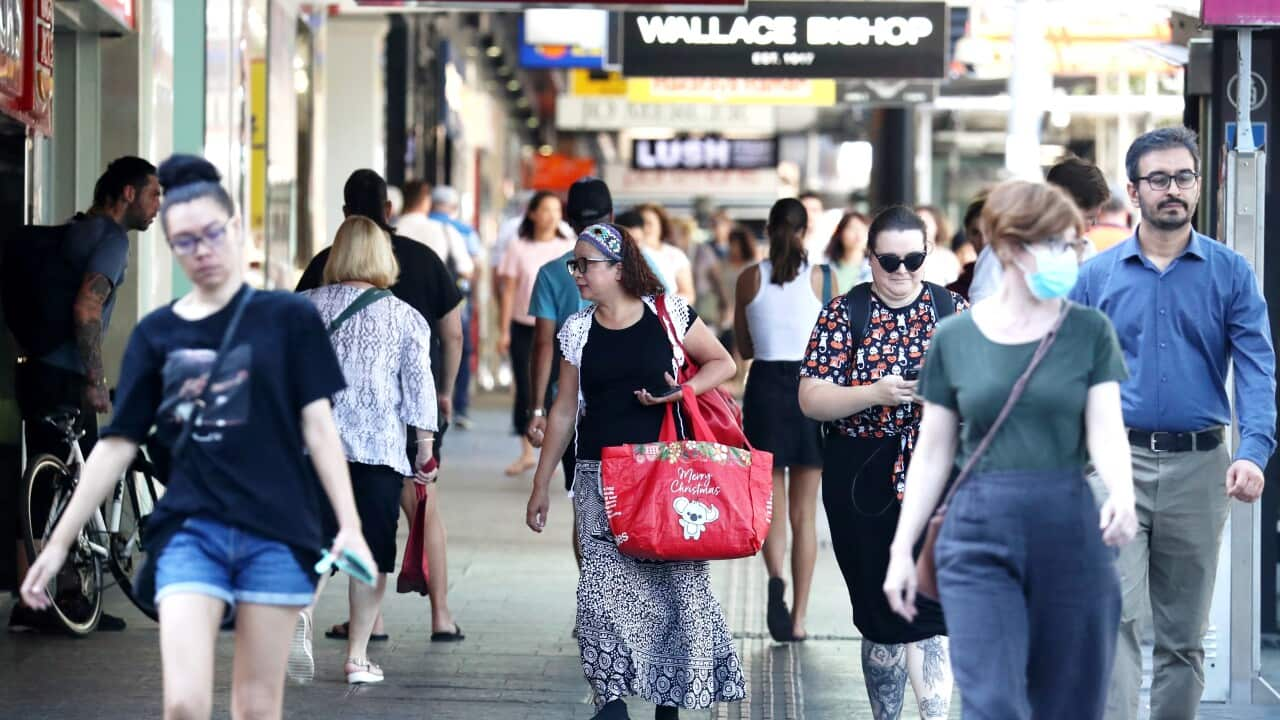Key Points
- Influenza, RSV, mycoplasma pneumonia, whooping cough and COVID-19 are all circulating in high numbers this year.
- Epidemiologists say it's unusual to see this many surges at once.
- The FLuQE coronavirus subvariant is making up the majority of infections in Australia.
If you feel like everyone you know is sick this year, there might be some truth to that.
This cold season Australia has experienced five waves of different respiratory infections, which is more than usual, says Professor Paul Griffin, an infectious diseases physician and clinical microbiologist from the University of Queensland.
"We're sicker than usual this winter and we're seeing a lot of things circulated simultaneously. That means a very significant proportion of the population is infected or has recently been infected," he told SBS News.
Case numbers show Australia is currently riding waves of influenza, respiratory syncytial virus (RSV), mycoplasma pneumonia, whooping cough as well as another potential wave of COVID-19 infections.
Making up the majority of COVID-19 infections in Australia is now the FLuQE coronavirus strain, which was first detected in early autumn.
Catherine Bennett, Deakin University's chair of epidemiology, says two thirds of COVID-19 cases that were genotyped last month were FluQE.
"It started to take off in March and by late May it was already 50 per cent of infections."
What do we know about FLuQE subvariants of COVID-19?
Professor Adrian Esterman, chair of biostatistics and epidemiology at the University of South Australia, said FLuQE is a mutation of the FliRT subvariants such as KP.2, which we have just emerged from a wave of.
"When it was very different from the previous XBB variants — over 30 mutations away from them. Then JN.1 itself mutated, allowing it to more easily evade our immune system into the FliRT subvariants such as KP.2."
"However, the genetic mutations that helped it better get around our immune system also made it more difficult to bind to our ACE 2 receptors — called binding efficiency."
KP.2 has now mutated to increase its binding efficiency, which are the FLuQE subvariants we're seeing such as KP.3, he said.
Esterman said we can expect a new wave to start in the next few weeks caused by the FLuQE subvariants.
"KP.3 is already dominating in the US, and rapidly increasing in Australia."
The FLuQE subvariants are not inherently more transmissible but may be more easily passed on because they're new and people don't have immunity, Griffin added.
Why are people getting so sick this year?
According to the health department's National Notifiable Disease Surveillance System (NNDSS), Australia has already recorded over 110,000 cases of RSV this year, nearly as high as last year's total of 128,111 cases.
Cases of whooping cough and the flu declined significantly during the COVID-19 pandemic, as people ceased socialising and masked up.
But by already recording more than 12,000 whooping cough cases, this year's figures are nearly six times greater than the 2023 total.
Meanwhile the flu this year is tracking similarly to last year's level of cases. According to the NNDSS, Australia has recorded more than 150,000 laboratory-confirmed cases of influenza this year, while last year there were over 289,000 recorded cases in total.
Mycoplasma pneumonia cases aren't recorded on the database but health authorities in NSW, Victoria, Queensland and South Australia have reported concerning spikes of cases among children.
Griffin said it's rare to see all these illnesses converging at the same time over a winter.
"I don't recall a time where we've had all five of those things circulating in such high numbers and certainly in our hospitals we are seeing sick people with the flu, which is really accelerating at the moment."
Bennett said influenza-like illnesses aren't quite at the peak they were at last year but will generally continue to go up through winter.
"It's still a concern that influenza notifications are still on the rise and that if we have a lower vaccination rate in the community then that's a risk; people are ending up in hospital with serious infections."
Bennett said vaccination take-up rates have been relatively low this winter. She wants to encourage people to get influenza and COVID-19 vaccines.
Are current COVID-19 vaccines effective?
These new subvariants appear to have similar rates of illness, hospitalisation and deaths to all previous Omicron subvariants, Esterman said.
"The current XBB.1.5-based vaccines will still give some protection against these new subvariants, but increasingly less so, as the mutations move the virus away from their XBB ancestors.
"We will have a new vaccine based on KP.2 towards the end of the year, which should give much better protection."




